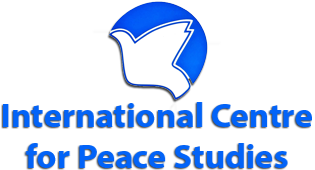As the Israel-Iran conflict escalates, this article analyses the unpredictable interplay of military might, geopolitical variables, and potential global ramifications. It explores key concerns, including potential US intervention, missile capabilities, the spectre of nuclear escalation, and regional repercussions. The piece emphasizes the urgent need for de-escalation and highlights the role of international stakeholders in finding a resolution.
Highlights
- The Israel-Iran conflict is an overt display of military might, unfolding through the lens of realism in an increasingly multipolar and “multiplex world”.
- Both nations have deployed sophisticated missiles and drones, with notable strikes on key military installations and urban centres.
- The conflict's extension could have far-reaching ramifications for the existing global order.
- There is a potential for the Trump Administration to intervene, despite its inconsistent messaging.
- A major concern is whether Israel would consider deploying nuclear weapons if it perceives an existential threat, and the potential for such a move to hasten regional and global intervention.
- Another critical variable is if Iran would escalate by targeting Western military bases in the Gulf region or disrupting oil supplies in the Red Sea and Strait of Hormuz, potentially causing acute global economic volatility.
- The comment suggests that the "stability-instability paradox" may not apply, and even brinkmanship has limitations in this scenario.
- The next few days are crucial for indicating the conflict's immediate trajectory.
- Urgent de-escalation and confidence-building measures are needed from all relevant global stakeholders. India, due to its friendly relations with both Iran and Israel, is identified as a potential facilitator for a ceasefire or truce.
- Multilateral bodies like the UN, BRICS, SCO, GCC, and OIC can also serve as viable forums for resolution.
*****
As Iran and Israel engage in an overt display of their military might, deploying all available conventional armaments against each other, the world—and the region—waits anxiously to see how this confrontation will unfold.
The Unfolding Confrontation: A Systemic View
From a systemic perspective through the lens of realism in international politics, both nations have shifted into high gear, wielding the hallmarks of power (read it, hard and muscular), national interest (intertwined with sovereignty and territorial integrity) and survival (shaped by the ideological tenets of Zionism and Persian nationalism).
At the same time, they are attempting to manage the crisis within the framework of an anarchic world, one increasingly defined by multipolarity, and the complexities of a ‘multiplex world’[1] and deep ideological cleavages between Western and non-Western perspectives.
At a sub-systemic level, if the conflict extends beyond a few days, it could have far-reaching ramifications for the existing global order— however dysfunctional or disordered it may be. Efforts to broker rapprochement between Israel and Iran, persuading both sides to agree on minimum deliverables to diffuse the immediate crisis, will prove critical.
Complex interplay of variables
In a fluid, volatile and evolving geopolitical landscape, shaped by the shifting sands of West Asia, the ongoing Tehran-Tel Aviv standoff remains unpredictable. At present, a complex interplay of variables is unfolding—often concurrently, and at times in conflicting ways—making any resolution highly uncertain. It is important to dwell on these variables.
The first one is: will the Trump Administration intervene to apply the brakes at a time of its choosing, and if so, when? What are the current lines of thinking at the Pentagon and the US Defense Department for determining the most appropriate time when they would ask the leaders of Israel and Iran to back down; and if they do, what kinds of carrots and sticks does the US have in store? With Trump’s 79th birthday celebration extravaganza and US Army’s 250th landmark anniversary parade now concluded, will the Trump-Vance-Rubio-Hegseth team be proactive and re-assert US leadership in the crisis? Trump’s messaging, however, remains inconsistent, oscillating between endorsing Israel’s military actions and advocating for diplomacy.
Two, according to available reports, both Israel and Iran have deployed sophisticated missiles and drones against each other’s key military installations, defence infrastructure, industrial facilities, and intelligence assets. Despite the high success rate of Israel’s Iron Dome, some Iranian missiles have managed to strike targets in Tel Aviv and Haifa. Meanwhile, Israeli missile strikes have eliminated key Iranian leaders and hit several cities, including Tehran. Israel possesses potent missile systems, including the Jericho series, with ranges spanning 500 km to 6,500 km, and the David’s Sling, capable of intercepting long-range missiles within a 300 km range. On the Iranian side, missiles such as Shahab-1 and Shahab-2/Qiam-1, with ranges of 350 km to 750 km, could prove to be game-changers if deployed effectively. There are indications that the US may have supported the Israeli Defence Forces (IDF) by deploying the THAAD missile defence system to intercept incoming Iranian attacks targeting major Israeli urban centres.
Three: If Israel perceives an existential threat, will it consider deploying nuclear weapons—a capability widely believed to exist despite its official non-disclosure? Should Israel resort to the nuclear option, what would constitute the tipping point? To what extent can Israel rely on nuclear deterrence, and would it consider tactical nuclear strikes in a limited warfare scenario? The key concerns here are: will it weigh the potential pros and cons of nuclear escalation and whether the use of a limited nuclear strike could remain contained or risk broader repercussions? Will it hasten regional and global intervention in response to such an unprecedented move?
Four, Will Iran raise the stakes further by striking Western military bases in the Gulf region, holding these nations as pro-Israel? The US has major military bases in Qatar, Bahrain, UAE, and Kuwait, while the United Kingdom maintains naval installations in Bahrain and Oman, and France has a military presence in the UAE. A direct Iranian attack on these facilities would dramatically escalate the conflict, potentially triggering direct military intervention by Western powers.
Five, beyond Israel and Iran, will key geopolitical players—such as Saudi Arabia, Turkey, China, and Russia—attempt to intervene and mediate in an effort to contain the crisis? If Iran disrupts oil shipments through the Red Sea and the Strait of Hormuz, crude oil prices could skyrocket, causing severe economic volatility, deep uncertainty, and global market disruptions. Such an escalation would not only destabilize energy security but also exacerbate geopolitical tensions worldwide.
Finally, will the stability-instability paradox prove ineffective in this conflict, as neither stability nor instability appears to induce the expected counterreaction from the opposing side? Even brinkmanship, whether pursued by Israeli or Iranian leadership, faces inherent limitations.
De-escalation Pathways: A Call for Global Action
The coming days could be pivotal, offering critical insights into the conflict's immediate trajectory. Ideally, efforts should be directed towards halting the escalation ladder, and securing an off-ramp measure before stakeholders can implement credible de-escalation measures and confidence-building mechanisms.
Given its strong diplomatic ties with both Israel and Iran, India could emerge as a potential facilitator, helping broker a mutually agreed ceasefire, truce, or temporary pause at the earliest opportunity. Likewise, multilateral platforms such as the United Nations (UN), BRICS, Shanghai Cooperation Organization (SCO), Gulf Cooperation Council (GCC), and the Organization of Islamic Cooperation (OIC) could play a vital role in forging a resolution.
Dr. Mohammed Badrul Alam is Professor (Retd.), Department of Political Science, Jamia Millia Islamia University, New Delhi, India. The views expressed here are his own.
[1] The multiplex world order is a concept introduced by Amitav Acharya to describe the evolving global system, which differs from traditional multipolarity or hegemonic dominance. Instead of being defined solely by great power competition, the multiplex order emphasizes pluralism, interdependence, and diverse governance structures. This framework challenges the assumption that global order must be dictated by a single hegemon or a rigid balance of power. Instead, it highlights adaptive, multi-layered governance that accommodates diverse interests and actors.



Comments